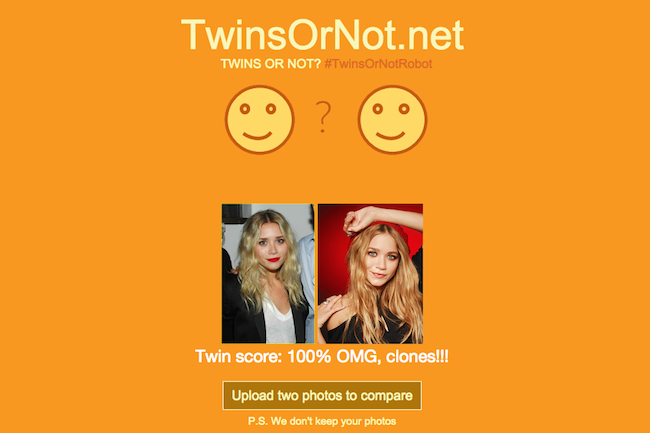
Much like how-old.net, Twins Or Not makes use of Microsoft’s Machine Learning tools, which apparently helped minimize the project’s complexity and development time. Matt Velloso, a software engineer at Microsoft, managed to launch the site in four hours from a hotel room in the Czech Republic. “Yes, it is that simple. We can create amazing, fun and useful sites and applications one after another, as many as we want,” he wrote in a blog post.
Twins Or Not may not be the most pragmatic demonstration of the new cloud APIs exhibited at Microsoft’s recent Build conference, but it’s undeniably great exposure. How-old.net, despite (or perhaps because of) its inaccuracy, gained impressive traction on social media — Velloso says it was used by “millions of people” — before rolling out to Bing image search.
It remains to be seen if Twins Or Not has the same viral potential as its sister creation, but given the results are ready-made timeline material — who would’ve guessed pop sensation Katey Perry looks nothing like Oscar winner Matthew McCanaughey, or that Mary-Kate and Ashley Olsen are practically indistinguishable? — an explosion of Twitter and Facebook sharing is pretty much primed.
If you’d like to have Microsoft’s computers tell you how much they think you look like an Internet stranger, or perhaps compare the most absurd combinations of celebrities, politicians, and family members you can think of, head on over to the Twins Or Not page. But ensure you have a few spare minutes — if you’re anything like us, you’ll end up spending way more time there than you intended.
Editors' Recommendations
- Microsoft Teams Premium uses AI to automatically recap your meetings
- This Microsoft Teams exploit could leave your account vulnerable
- This new Microsoft Teams feature is like Snapchat for your office chats
- Microsoft Defender finally feels like proper antivirus software for individuals
- Hackers can now take over your computer through Microsoft Word


